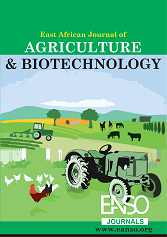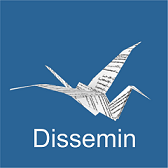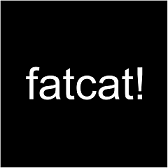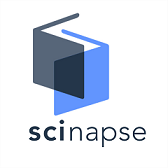Dogs Owners’ Perception on the Use of Black Soldier Fly, Hermetia illucens L (Diptera: Stratiomyidae) Larvae as an Alternative Source of Protein in Dog Food in Kenya
Abstract
In recent years, pet owners have begun to show more consideration for their companion animals, which includes paying more attention to their nutrition. This is thought to be a strategy to protect the welfare and health of their animals. As feed and food, using insects has gained increased interest from industry, investigators, policymakers, and the general public globally. Owing to their rapid biomass turnover and dietary value, consideration of insects to serve as novel high-quality protein sources to replace the conventionally used sources for pet foods is gaining momentum. In the formulation of pet foods, ingredients made from black soldier fly larvae (BSFL) are being investigated as sustainable substitutes for traditional animal-derived components. There is, however, limited information about using insects as a source of protein in dog food in Kenya
Downloads
References
Andersen, D. E. (2007). Survey techniques. Raptor research and management techniques, 89-100.
Beynen, A. (2018). Anton C. Beynen. Creat. Companion, 9(September), 40–41.
Bosch, G., Zhang, S., A B Oonincx, D. G., Hendriks, W. H., Oonincx, D. G. A. B., & Hendriks, W. H. (2019). WALTHAM SUPPLEMENT Protein quality of insects as potential ingredients for dog and cat foods*. Journal of Nutritional Science, 3, 1–4. https://doi.org/10.1017/jns.2014.23
DeSA, U. (2015). World Population Prospects The 2015 Revision. Retrieved from https://esa.un.org/unpd/wpp/publications/files/key_findings_wpp_2015.pdf
Donfrancesco, B. Di. (2016). Sensory analysis and acceptability of pet food. Retrieved from https://krex.k-state.edu/dspace/bitstream/handle/2097/34524/BrizioDiDonfrancesco2016.pdf?sequence=1&isAllowed=y
El-Wahab, A. A., Meyer, L., Kölln, M., Chuppava, B., Wilke, V., Visscher, C., & Kamphues, J. (2021). Insect larvae meal (Hermetia illucens) as a sustainable protein source of canine food and its impacts on nutrient digestibility and fecal quality. Animals, 11(9). https://doi.org/10.3390/ani11092525
Gasco, L., Finke, M., & Huis, A. Van. (2018). Can diets containing insects promote animal health? OPEN ACCESS, 4(1), 1–4. https://doi.org/10.3920/JIFF2018.x001
Hasnol, S., Kiatkittipong, K., Kiatkittipong, W., Wong, C. Y., Khe, C. S., Lam, M. K., ... & Lim, J. W. (2020). A review on insights for green production of unconventional protein and energy sources derived from the larval biomass of black soldier fly. Processes, 8(5), 523. https://doi.org/10.3390/pr8050523
Huis, A. Van. (2013). Potential of Insects as Food and Feed in Assuring Food Security, 563–583. https://doi.org/10.1146/annurev-ento-120811-153704
Kaiser, H. F. (1960). Directional statistical decisions. Psychological Review, 67(3), 160.
Kibirige, D. (2013). The Impact of Human Dimensions on Smallholder Farming in the Eastern Cape Province of South Africa (Doctoral disseration). University of Fort Hare.
Kim, S. W., Less, J. F., Wang, L., Yan, T., Kiron, V., Kaushik, S. J., & Lei, X. G. (2019). Meeting Global Feed Protein Demand: Challenge, Opportunity, and Strategy. Annual Review of Animal Biosciences, 7(1), 221–243. https://doi.org/10.1146/annurev-animal-030117-014838
Kilburn, L. R., Carlson, A. T., Lewis, E., & Serao, M. C. R. (2020). Cricket (Gryllodes sigillatus) meal fed to healthy adult dogs does not affect general health and minimally impacts apparent total tract digestibility. Journal of Animal Science, 98(3), skaa083. https://doi.org/10.1093/jas/skaa083
Kisaka-Lwayo, M., & Obi, A. (2012). Risk perceptions and management strategies by smallholder farmers in KwaZulu-Natal Province, South Africa. International Journal of Agricultural Management, 1(3), 28–39. https://doi.org/10.22004/AG.ECON.149748
Kotob, G., Sluczanowski, N., Siddiqui, S. A., Tome, N. M., Dalim, M., van der Raad, P., & Paul, A. (2022). Potential application of black soldier fly fats in canine and feline diet formulations: A review of literature. Journal of Asia-Pacific Entomology, 101994. https://doi.org/10.1016/j.aspen.2022.101994
Liñán, F., Santos, F. J., & Fernández, J. (2011). The influence of perceptions on potential entrepreneurs. International Entrepreneurship and Management Journal, 7(3), 373–390. https://doi.org/10.1007/S11365-011-0199-7/METRICS
Leriche, I., Chala, V., & Ereau, C. (2014). Pet owners’ perception of insects as a protein source for cats and dogs. In Proceedings XI Southern European Veterinary Conference. Barcelona.
MacCallum, R. C., Widaman, K. F., Preacher, K. J., & Hong, S. (2001). Sample size in factor analysis: The role of model error. Multivariate behavioral research, 36(4), 611-637. https://doi.org/10.1207/S15327906MBR3604_06
Makkar, H. P. S. S., Tran, G., Heuzé, V., & Ankers, P. (2014). State-of-the-art on use of insects as animal feed. Animal Feed Science and Technology, 197(November), 1–33. https://doi.org/10.1016/j.anifeedsci.2014.07.008
Niassy, S., Musundire, R., Ekesi, S., & van Huis, A. (2018). Edible insect value chains in Africa. Journal of Insects as Food and Feed, 4(4), 199–201. https://doi.org/10.3920/JIFF2018.x005
Okin, G. S. (2017). Environmental impacts of food consumption by dogs and cats. PloS one, 12(8), e0181301. https://doi.org/10.1371/journal.pone.0181301
Otieno, P. S., Ogutu, C. A., Mburu, J., & Nyikal, R. A. (2017). Effect of Global-GAP policy on climate change perceptions of smallholder French beans farmers in central and Eastern Regions, Kenya. Climate, 5(2), 27. https://doi.org/10.3390/cli5020027
Patel, K., Mohamed, A., & van Vuuren, G. W. (2018). A regression and comparative study of United States and South African yield curves using principal component analysis. South African Journal of Economic and Management Sciences, 21(1), 1-15. https://hdl.handle.net/10520/EJC-de82d98dd
Penazzi, L., Schiavone, A., Russo, N., Nery, J., Valle, E., & Aldrich, C. G. (2021). In vivo and in vitro Digestibility of an Extruded Complete Dog Food Containing Black Soldier Fly (Hermetia illucens ) Larvae Meal as Protein Source. Frontiers in Veterinery Science, 8(June). https://doi.org/10.3389/fvets.2021.653411
Ravzanaadii, N., Kim, S.-H., Choi, W.-H., Hong, S.-J., & Kim, N.-J. (2012). Nutritional Value of Mealworm, Tenebrio molitor as Food Source. International Journal of Industrial Entomology, 25(1), 93–98. https://doi.org/10.7852/ijie.2012.25.1.093
Seo, K., Cho, H. W., Chun, J., Jeon, J., Kim, C., Kim, M., & Kim, K. (2021). Evaluation of fermented oat and black soldier fly larva as food ingredients in senior dog diets. Animals, 11(12), 3509. https://doi.org/10.3390/ani11123509
Siddiqui, S. A., Brunner, T. A., Tamm, I., van der Raad, P., Patekar, G., Bahmid, N. A., ... & Paul, A. (2023). Insect-based dog and cat food: A short investigative review on market, claims and consumer perception. Journal of Asia-Pacific Entomology, 26(1), 102020. https://doi.org/10.1016/j.aspen.2022.102020
Valdés, F., Villanueva, V., Durán, E., Campos, F., Avendaño, C., Sánchez, M., … Valenzuela, C. (2022). Insects as Feed for Companion and Exotic Pets: A Current Trend. Animals 2022, Vol. 12, Page 1450, 12(11), 1450. https://doi.org/10.3390/ANI12111450
Van Huis, A., Oonincx, D. G. A. B., Rojo, S., & Tomberlin, J. K. (2020). Insects as feed: house fly or black soldier fly?. 10.3920/JIFF2020.x003
van Huis, A., Itterbeeck, J. Van, Klunder, H., Mertens, E., Halloran, A., Muir, G., & Vantomme, P. (2013). Edible insects Future prospects for food and feed security.
Yamka, R.M.; Koutsos, E.A.; McComb, A. Evaluation of Black Soldier Fly Larvae as a Protein and Fat Source in Pet Foods; Petfood Forum: Kansas City, MI, USA, 2019; pp. 8–9.
Copyright (c) 2023 Susan Ngalo, Adrian Mukhebi, Kenneth Otieno

This work is licensed under a Creative Commons Attribution 4.0 International License.




























